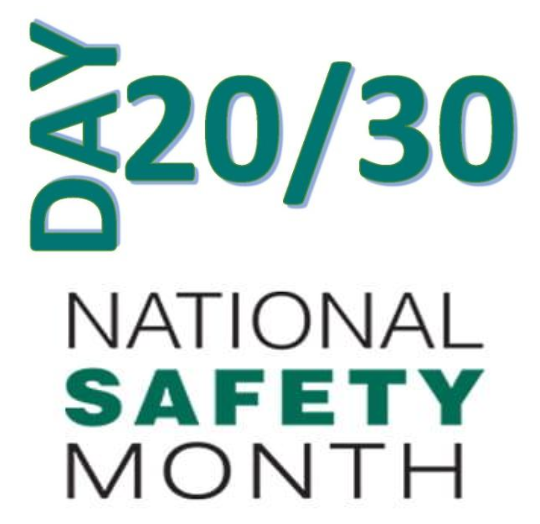

Construction's "Fatal Four"
Out of 4,693 worker fatalities in private industry in calendar year 2016, 991 or 21.1% were in construction - that is, one in five worker deaths last year were in construction.
The leading causes of private sector worker deaths (excluding highway collisions) in the construction industry were falls, followed by struck by object, electrocution, and caught-in/between.
These "Fatal Four" were responsible for more than half (63.7%) the construction worker deaths in 2016, BLS reports.
Eliminating the Fatal Four would save 631 workers' lives in America every year.
-
Falls - 384 out of 991 total deaths in construction in CY 2016 (38.7%)
-
Struck by Object - 93 (9.4%)
-
Electrocutions - 82 (8.3%)
-
Caught-in/between* - 72 (7.3%)
(*This category includes construction workers killed when caught-in or compressed by equipment or objects, and struck, caught, or crushed in collapsing structure, equipment, or material)
More information can be found here on Osha's website.
Commonly Used Statistics
Federal OSHA coverage
Federal OSHA is a small agency; with our state partners we have approximately 2,100 inspectors responsible for the health and safety of 130 million workers, employed at more than 8 million worksites around the nation — which translates to about one compliance officer for every 59,000 workers.
Federal OSHA has 10 regional offices and 85 local area offices.
FY 2016: $552,787,000
FY 2017: $551,736,000
FY 2018: $543,257,000 (requested)
OSHA inspections
FY 2017 total federal inspections: 32,396
FY 2017 total State Plan inspections: 43,551
Worker injuries, illnesses and fatalities
5,190 workers were killed on the job in 2016 [https://www.bls.gov/news.release/cfoi.nr0.htm] (3.6 per 100,000 full-time equivalent workers) — on average, more than 99 a week or more than 14 deaths every day.
Construction's "Fatal Four"
Out of 4,693 worker fatalities in private industry in calendar year 2016, 991 or 21.1% were in construction — that is, one in five worker deaths last year were in construction. The leading causes of private sector worker deaths (excluding highway collisions) in the construction industry were falls, followed by struck by object, electrocution, and caught-in/between. These "Fatal Four" were responsible for more than half (63.7%) the construction worker deaths in 2016, BLS reports. Eliminating the Fatal Four would save 631 workers' lives in America every year.
-
Falls — 384 out of 991 total deaths in construction in CY 2016 (38.7%)
-
Struck by Object - 93 (9.4%)
-
Electrocutions - 82 (8.3%)
-
Caught-in/between* - 72 (7.3%)
(*This category includes construction workers killed when caught-in or compressed by equipment or objects, and struck, caught, or crushed in collapsing structure, equipment, or material)
Top 10 most frequently cited OSHA standards violated in FY 2017
The following were the top 10 most frequently cited standards by Federal OSHA in fiscal year 2017 (October 1, 2016, through September 30, 2017):
-
Fall protection, construction (29 CFR 1926.501) [related OSHA Safety and Health Topics page]
-
Hazard communication standard, general industry (29 CFR 1910.1200) [related OSHA Safety and Health Topics page]]
-
Scaffolding, general requirements, construction (29 CFR 1926.451) [related OSHA Safety and Health Topics page]
-
Respiratory protection, general industry (29 CFR 1910.134) [related OSHA Safety and Health Topics page]
-
Control of hazardous energy (lockout/tagout), general industry (29 CFR 1910.147) [related OSHA Safety and Health Topics page]
-
Ladders, construction (29 CFR 1926.1053) [related OSHA Safety and Health Topics page]
-
Powered industrial trucks, general industry (29 CFR 1910.178) [related OSHA Safety and Health Topics page]
-
Machinery and Machine Guarding, general requirements (29 CFR 1910.212) [related OSHA Safety and Health Topics page]
-
Fall Protection–Training Requirements (29 CFR 1926.503) [related OSHA Safety and Health Topics page]
-
Electrical, wiring methods, components and equipment, general industry (29 CFR 1910.305) [related OSHA Safety and Health Topics page]
OSHA is Making a Difference
-
In more than four decades, OSHA and our state partners, coupled with the efforts of employers, safety and health professionals, unions and advocates, have had a dramatic effect on workplace safety.
-
Worker deaths in America are down-on average, from about 38 worker deaths a day in 1970 to 14 a day in 2016.
-
Worker injuries and illnesses are down-from 10.9 incidents per 100 workers in 1972 to 2.9 per 100 2016.
https://www.osha.gov/oshstats/commonstats.html
Related Topics: Construction Safety, Safety Tips, National Safety Month, Monthly Safety Topics